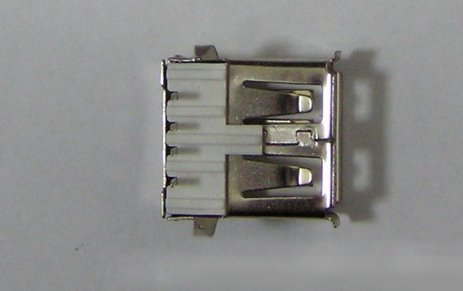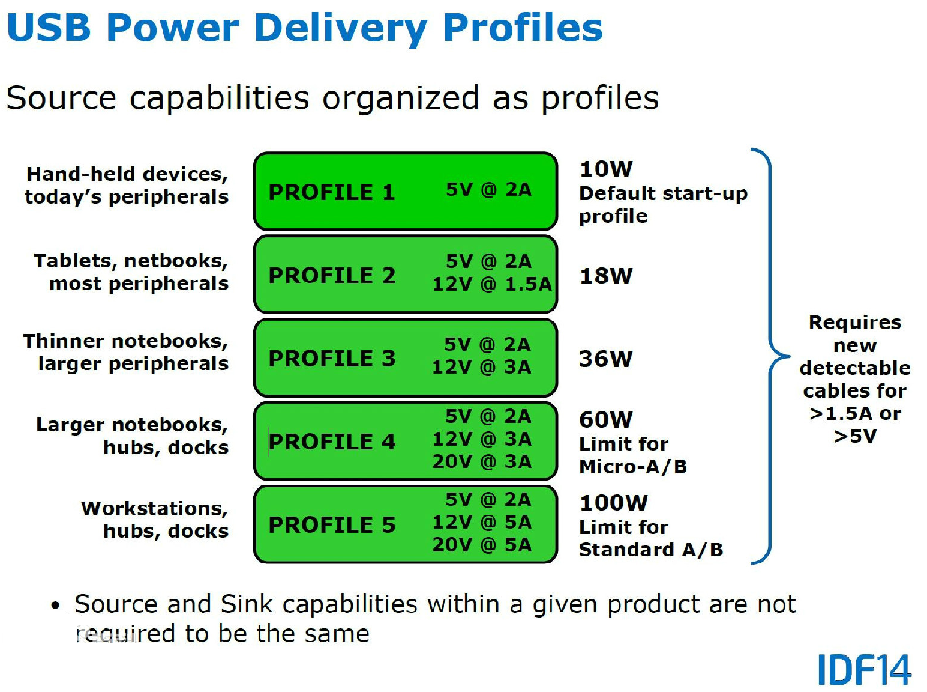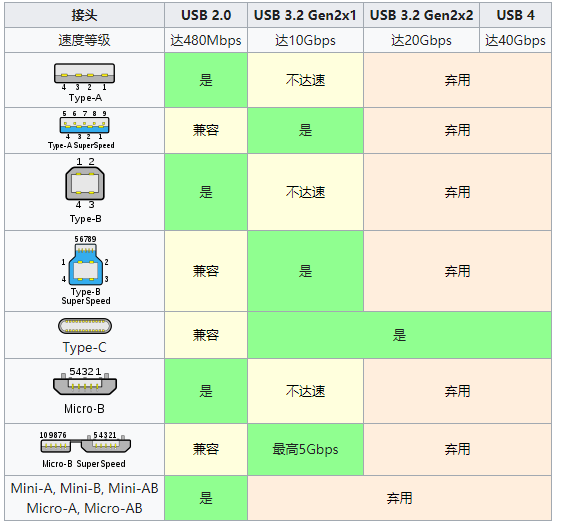您现在的位置是:主页 > USB百科 >
USB带宽管理规则
发布时间:2022-12-11 10:48:40所属栏目:USB百科 已帮助人编辑作者:【USB接口百科】
USB主机负责管理总线的带宽。这是在配置同步和中断端点时的枚举时以及在总线的整个操作过程中完成的。该规范对总线进行了限制,允许为全速总线上的周期传输(中断和同步)分配不超过 90% 的任何帧。在高速总线上,这个限制减少到不超过 80% 的微帧可以分配给周期传输。
因此,如果有一个具有周期性传输的高度饱和的总线,剩余的 10% 将用于控制传输,一旦分配了这些,批量传输将获得剩余的部分。

The host is responsible for managing the bandwidth of the bus. This is done at enumeration when configuring Isochronous and Interrupt Endpoints and throughout the operation of the bus. The specification places limits on the bus, allowing no more than 90% of any frame to be allocated for periodic transfers (Interrupt and Isochronous) on a full speed bus. On high speed buses this limitation gets reduced to no more than 80% of a microframe can be allocated for periodic transfers.
So you can quite quickly see that if you have a highly saturated bus with periodic transfers, the remaining 10% is left for control transfers and once those have been allocated, bulk transfers will get their slice of what is left.
以上就是USB接口百科为您提供USB带宽管理规则的解读,本文章链接: http://www.usb-hub.cn/usbbk/42138.html 欢迎分享转载,更多婚礼相关资讯请前往USB百科
相关文章
USB接口百科推荐
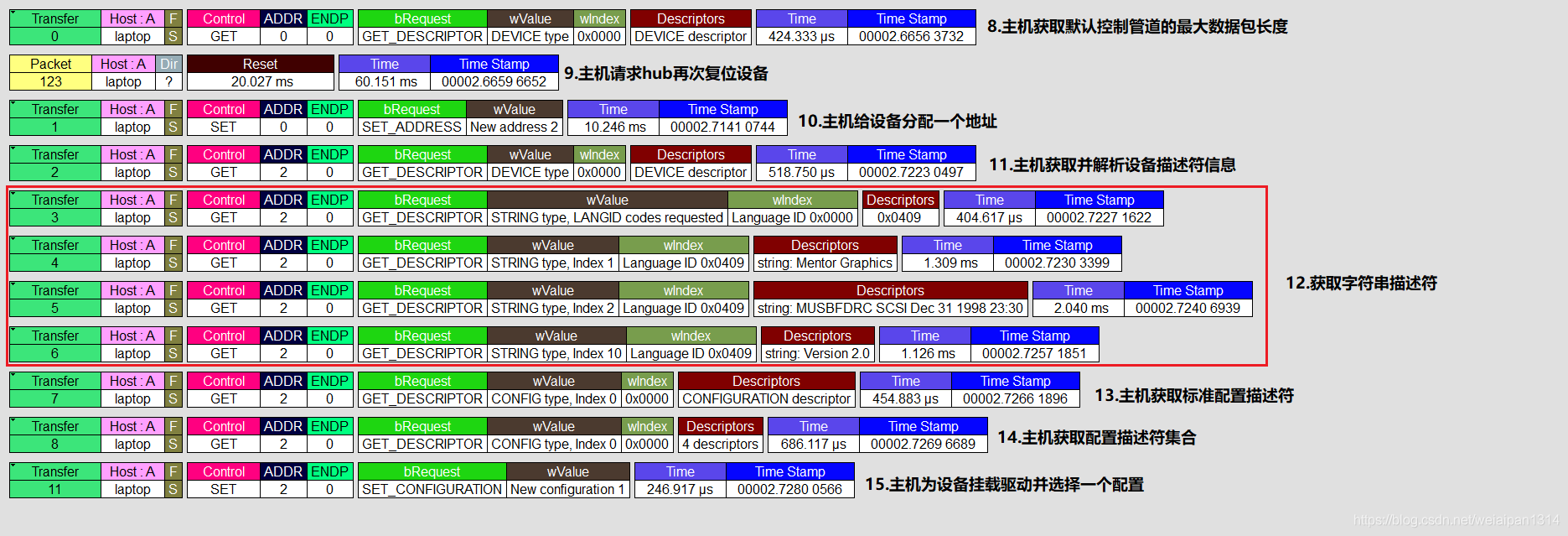
USB设备的枚举过程分析

USB的VendorID、ProductID和BcdDevice有什么作用
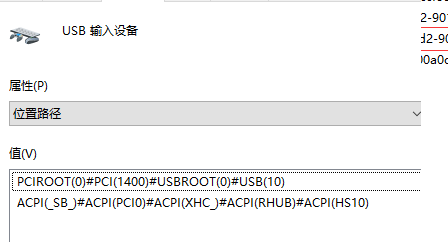
同样的soc板子用的同一个USB驱动设备名称,厂商和产品ID都一样,使用什么方法
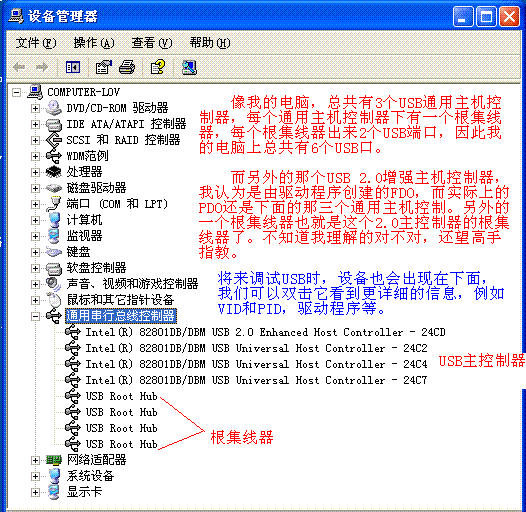
USB的连接模型
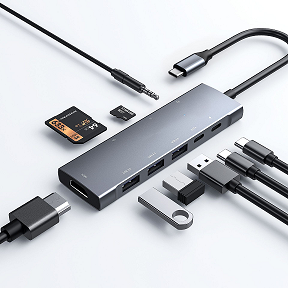
USB与其它总线相比的优点是什么

USB通信设备类CDC简介
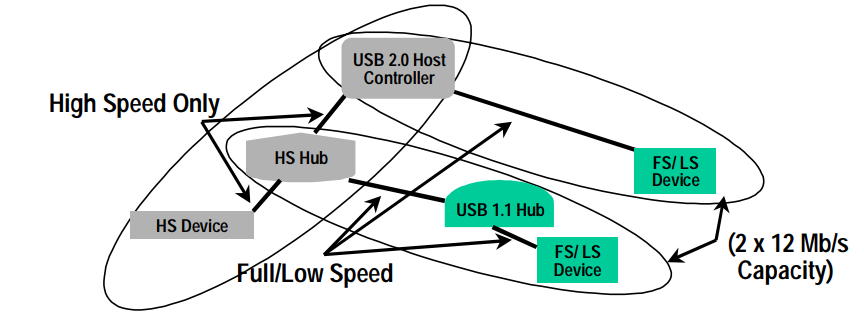
USB设备和USB集线器HUB的数据传输

USB2.0一定支持高速模式吗?

USB规范分类大全和USB协议关系树
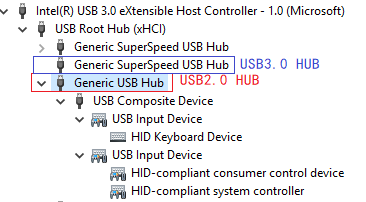
USB 配对/伴随端口(Companion Port)

DisplayLink简介 USB显示技术
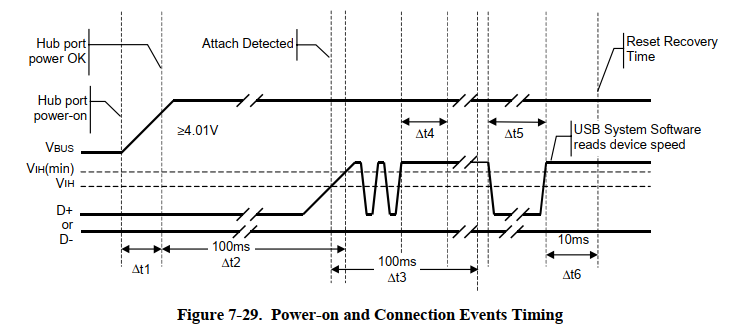
Windows下USB堆栈如何枚举USB设备
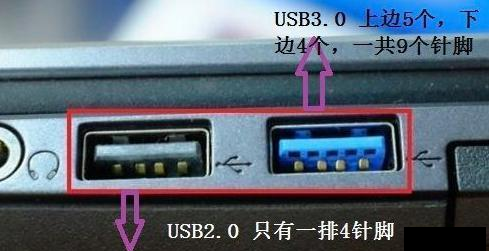
USB3.0和USB2.0有什么区别

USB设备类bDeviceClass、bDeviceSubClass、bDeviceProtocol
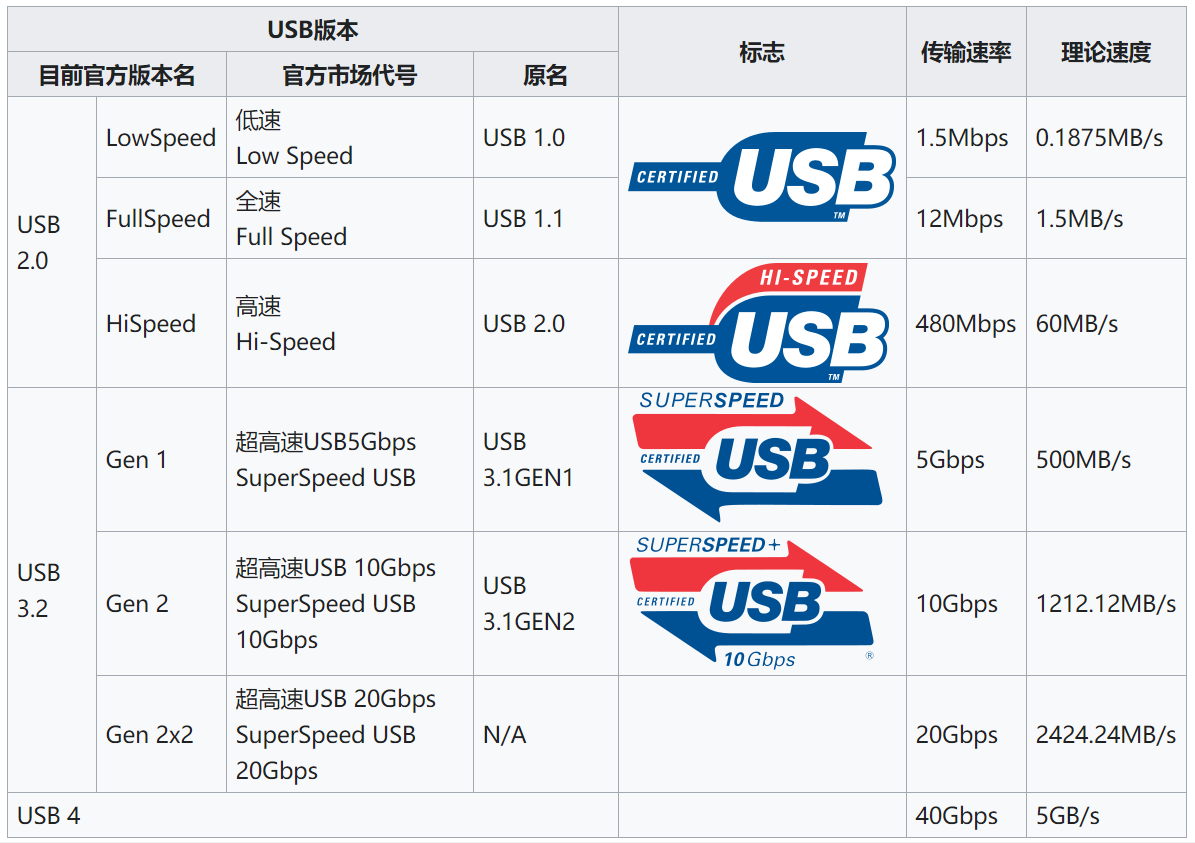
USB3.0传输速度是多少?


